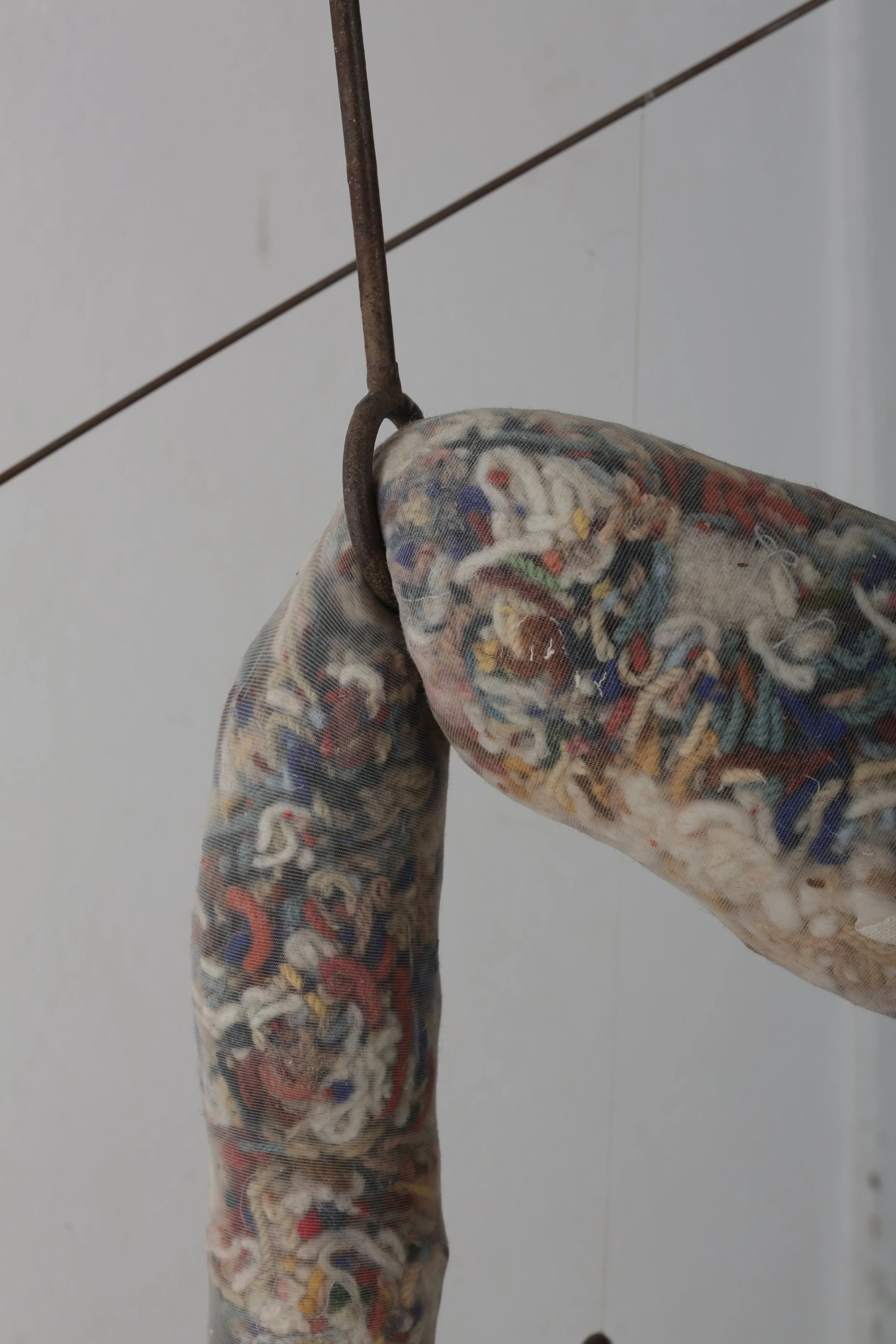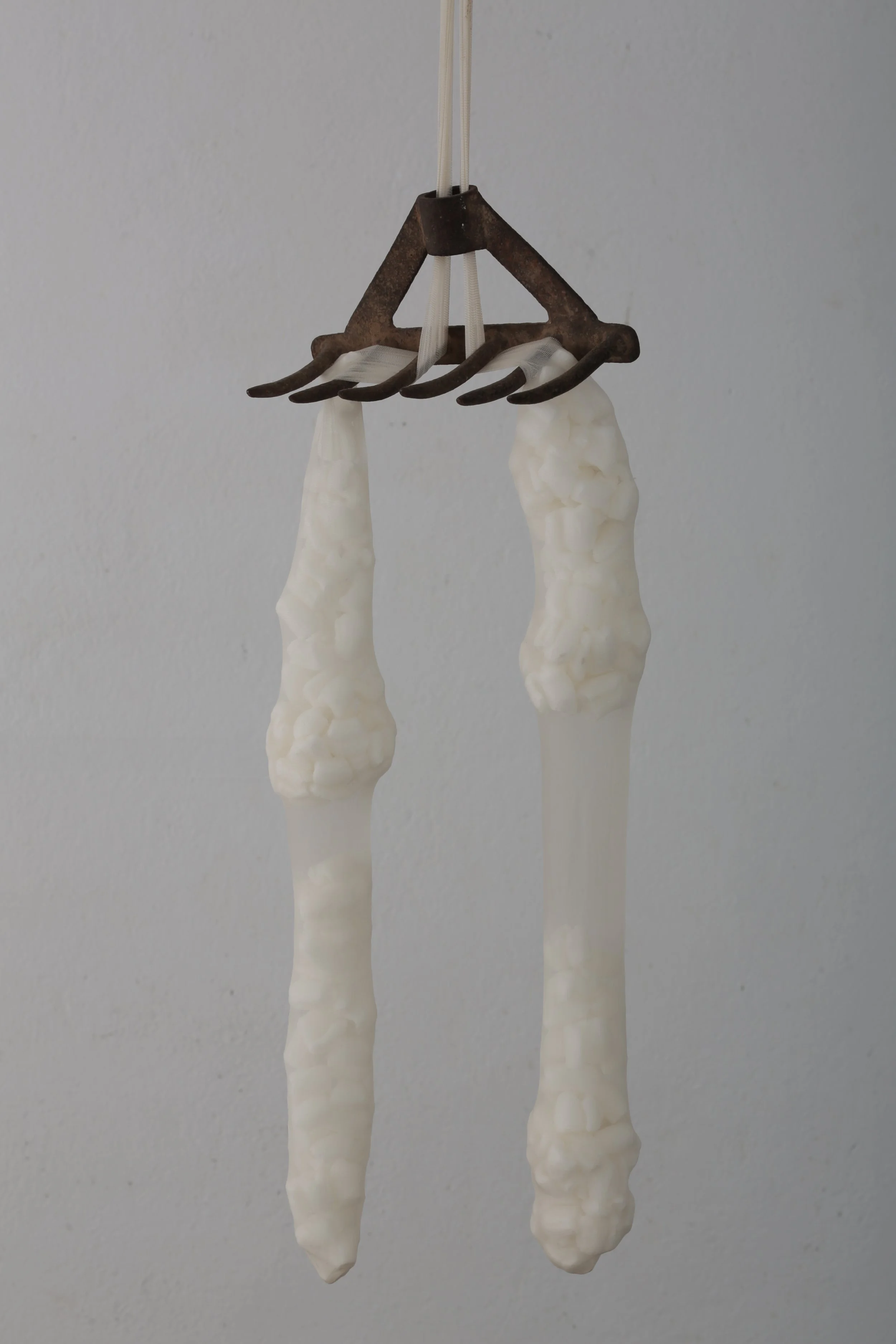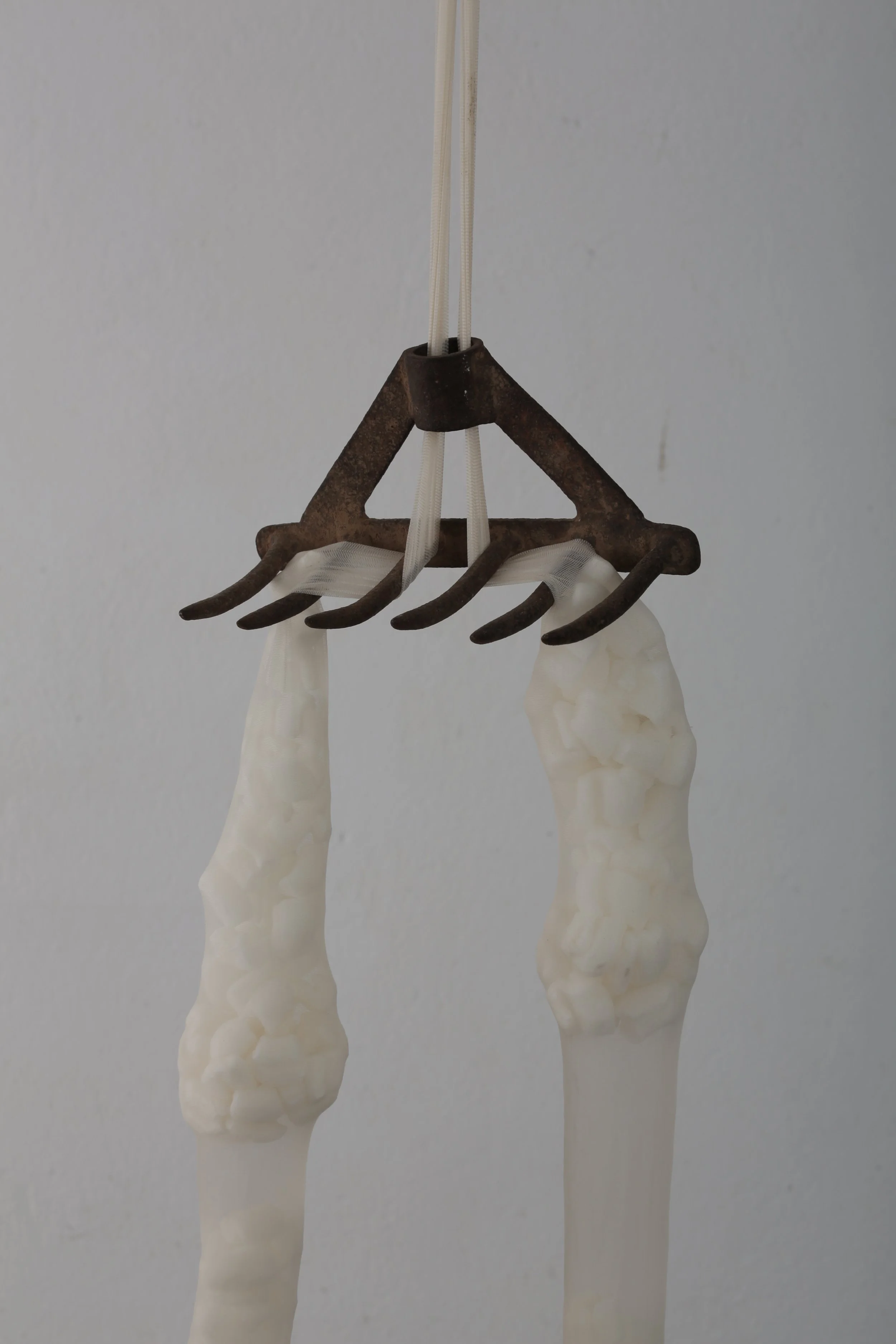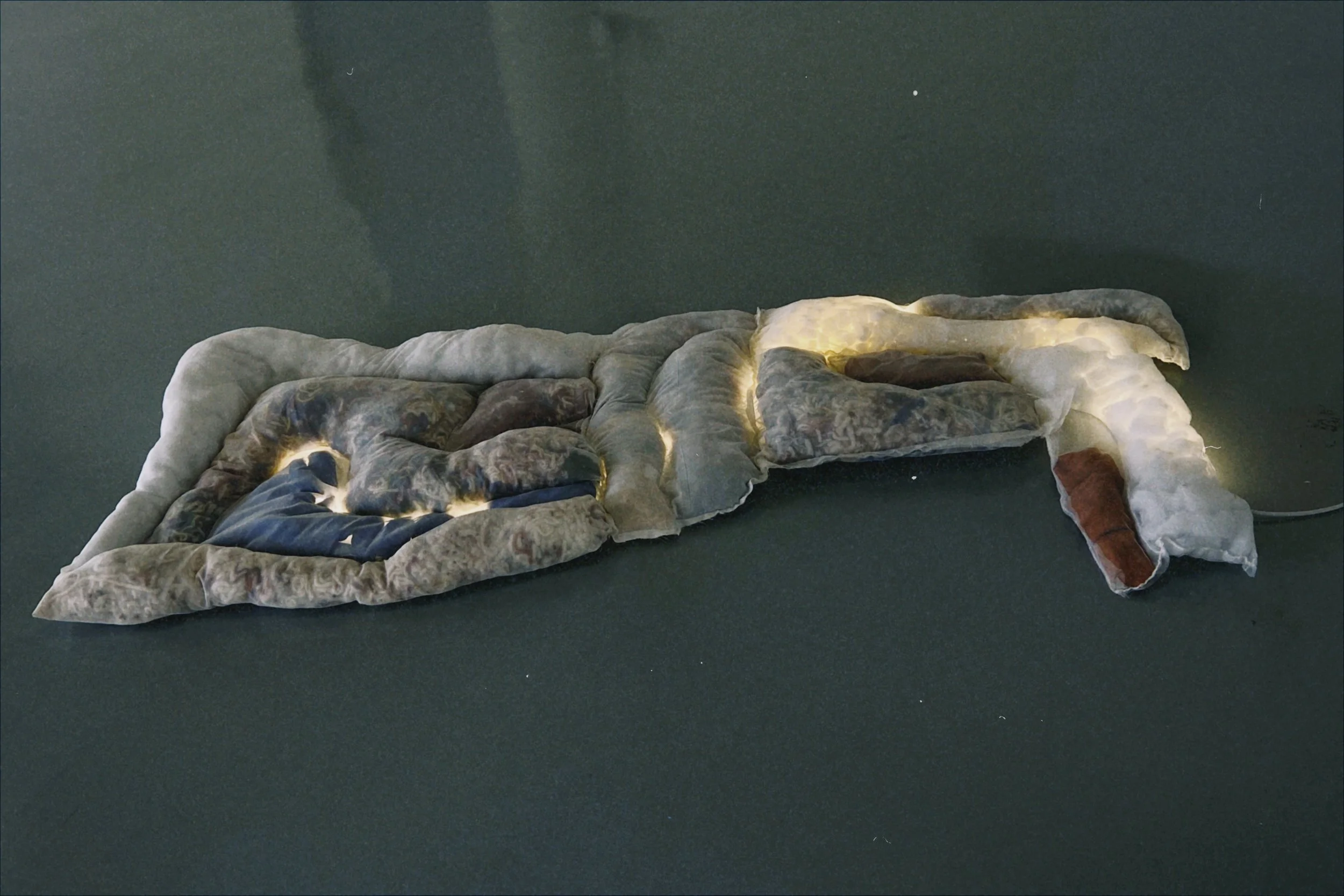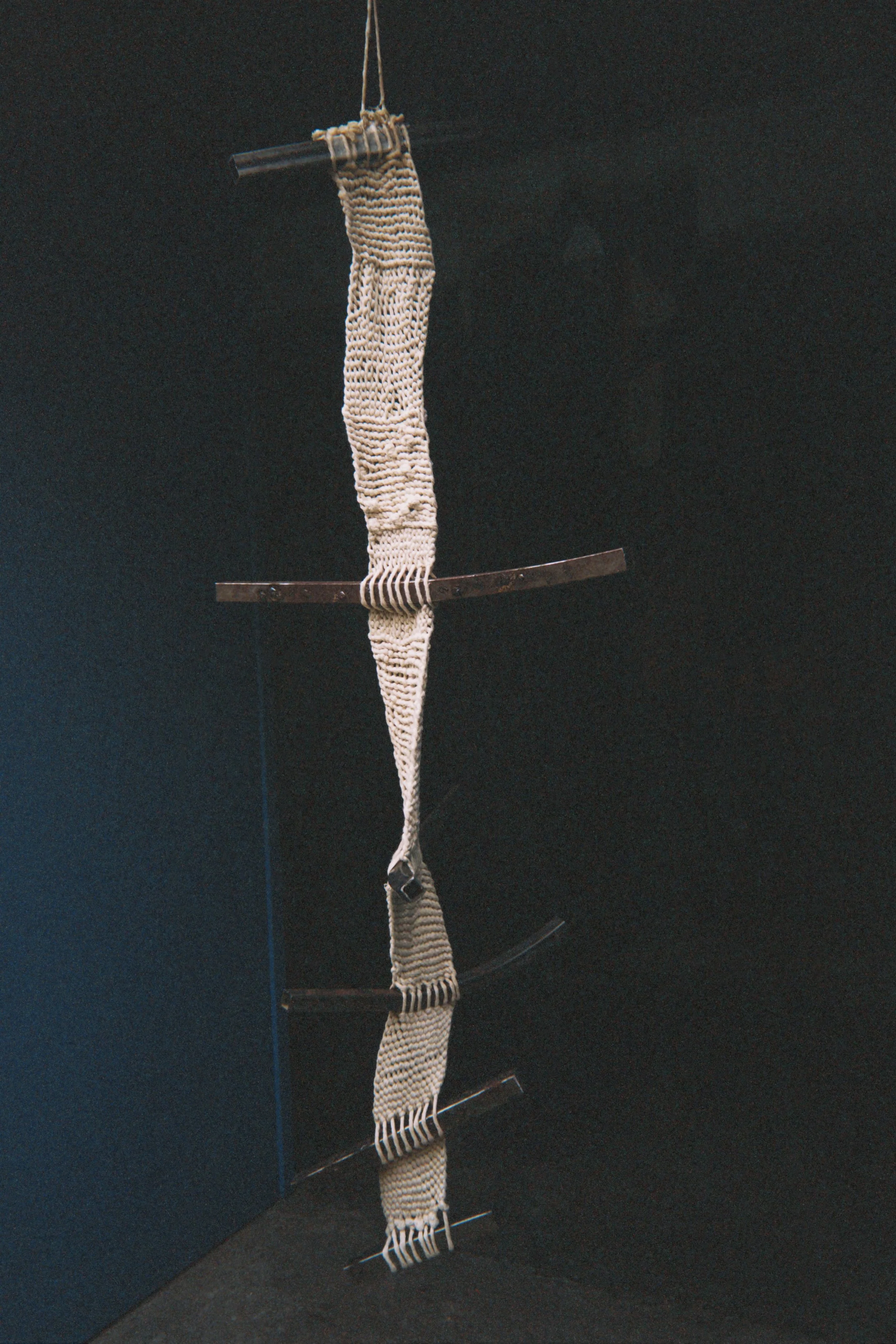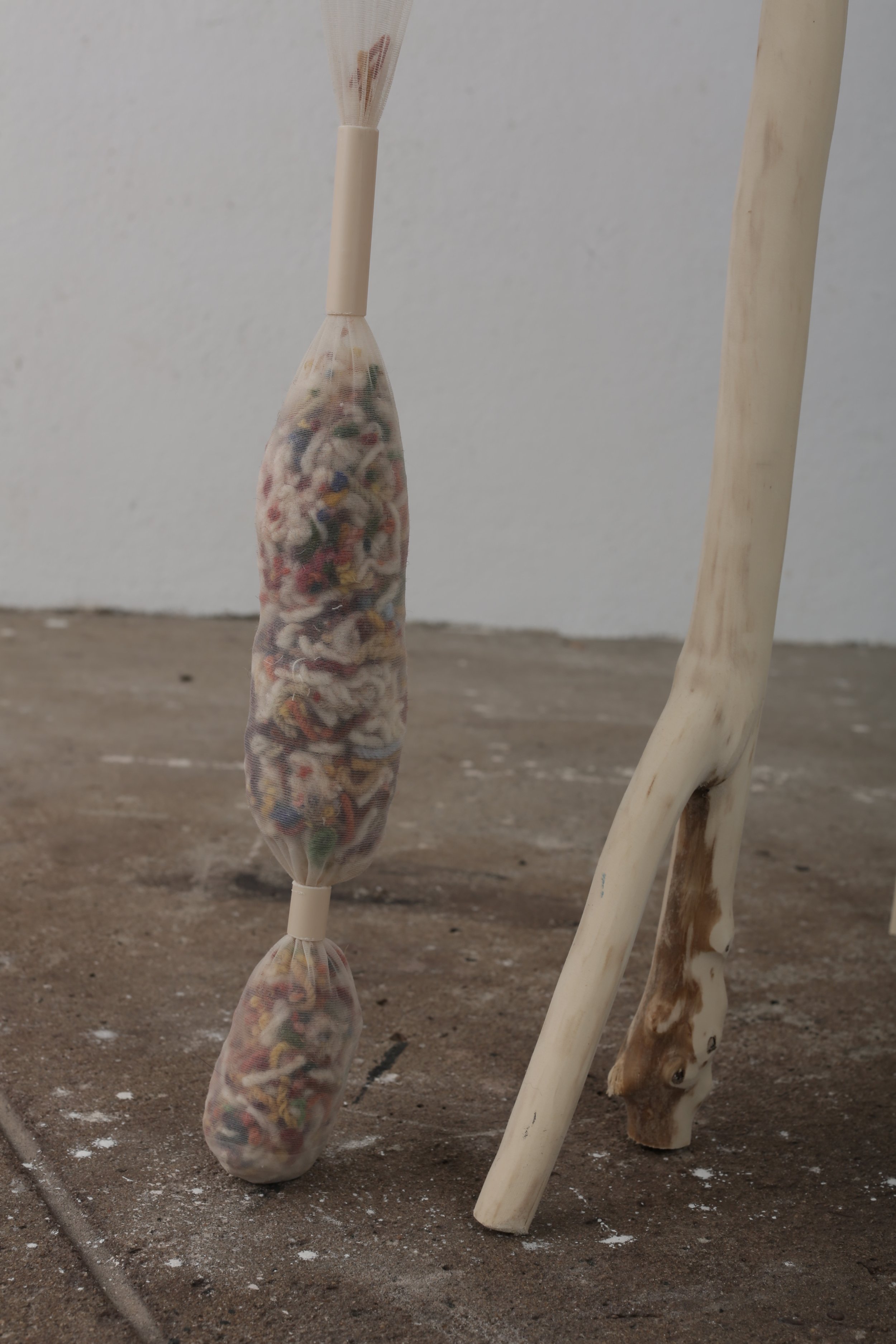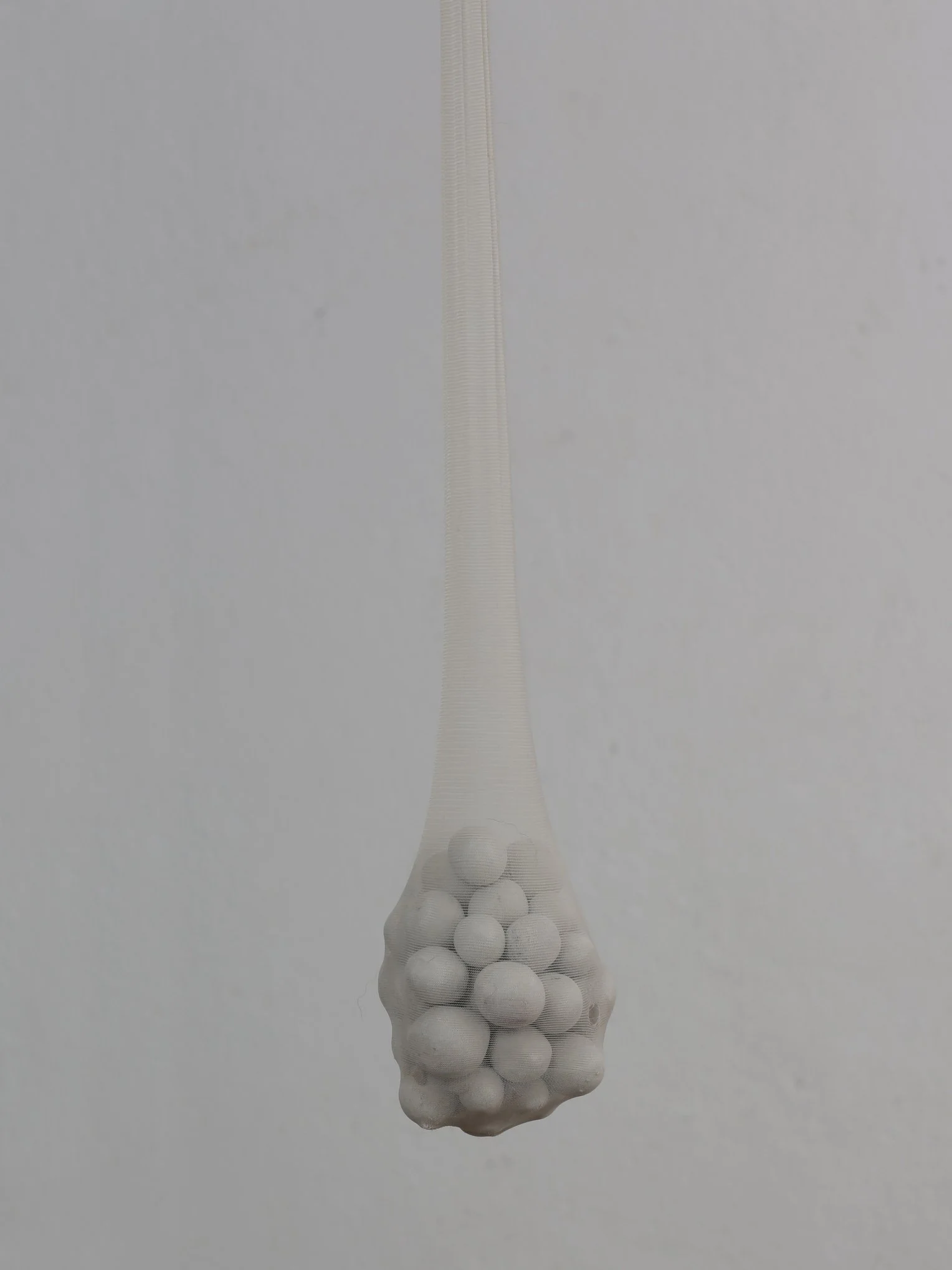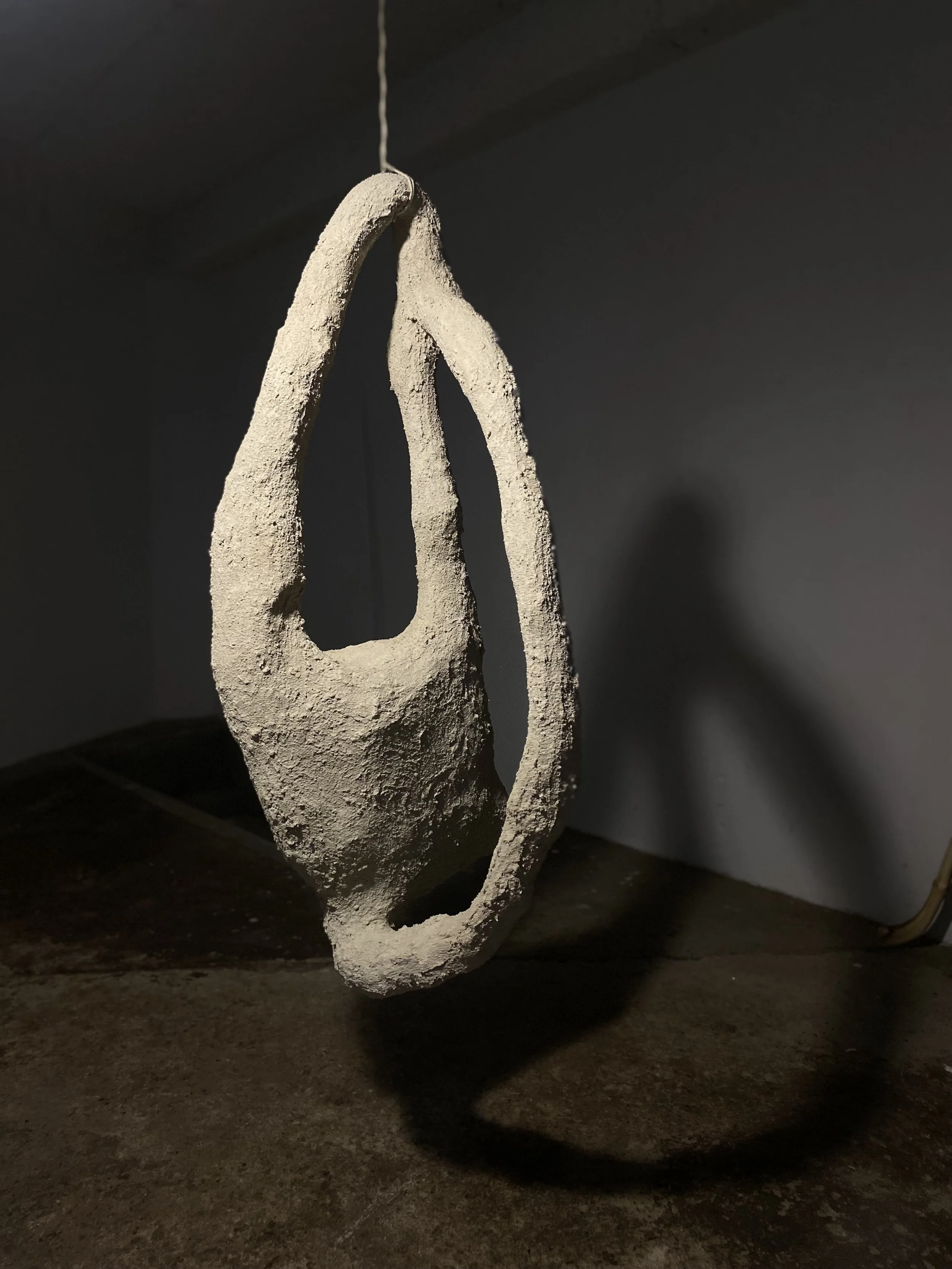A inversão de papéis entre os materiais, subvertendo as expectativas sobre sua função e significado. A proposta central reside em transformar aquilo que, convencionalmente, seria considerado estrutural e rígido em algo sustentado, enquanto o material macio, associado à fragilidade, assume o papel de suporte.
Essa abordagem desconstrói noções tradicionais de hierarquia material. O que é considerado frágil torna-se essencial para a estabilidade, desafiando a percepção comum de que a força reside apenas no rígido ou no ostensivo. A relação entre o sustentado e o sustentador é reconfigurada, sugerindo uma nova compreensão sobre equilíbrio e dependência.
The inversion of roles between materials, subverting expectations about their function and meaning. The central proposal lies in transforming what is conventionally considered structural and rigid into something supported, while the soft material, often associated with fragility, takes on the role of support.
This approach deconstructs traditional notions of material hierarchy. What is perceived as fragile becomes essential for stability, challenging the common perception that strength resides solely in rigidity or obvious solidity. The relationship between what supports and what is supported is reconfigured, suggesting a new understanding of balance and dependence.
Os processos internos que ocorrem em um indivíduo são dinâmicos e multifacetados, sendo continuamente influenciados por fatores contextuais, sociais e psicológicos. A maneira como esses processos se tornam visíveis—ou permanecem ocultos—varia de acordo com as circunstâncias, as relações interpessoais e a percepção subjetiva de cada momento.
Essa variabilidade levanta questões fundamentais sobre a construção da identidade e a gestão da autoexpressão: Como diferentes contextos influenciam o que revelamos de nós mesmos? Qual o papel da escolha consciente e inconsciente nesse processo? E como essas revelações moldam nossa interação com o outro?
Estas obras buscam explorar os mecanismos que determinam quando, como e quanto escolhemos expor nossos processos internos. Além disso, examina os fatores que mediam essas decisões, como a percepção da vulnerabilidade, a confiança interpessoal e as normas sociais. Entender essas dinâmicas contribui para o estudo da identidade humana, revelando como a transparência não é apenas um atributo fixo, mas um fenômeno relacional e contextual.
The internal processes occurring within an individual are dynamic and multifaceted, continuously influenced by contextual, social, and psychological factors. The way these processes become visible—or remain hidden—varies according to circumstances, interpersonal relationships, and the subjective perception of each moment.
This variability raises fundamental questions about the construction of identity and the management of self-expression: How do different contexts influence what we reveal about ourselves? What role do conscious and unconscious choices play in this process? And how do these revelations shape our interactions with others?
These works aim to explore the mechanisms that determine when, how, and to what extent we choose to expose our internal processes. Furthermore, they examine the factors that mediate these decisions, such as the perception of vulnerability, interpersonal trust, and social norms. Understanding these dynamics contributes to the study of human identity, revealing how transparency is not merely a fixed attribute but a relational and contextual phenomenon.
O firme e o frágil, o que sustenta e o que escapa. Por meio da experimentação com a matéria, busco o instante em que o contraste se converte em respiro, em relação. Habitar um território de tensão.
The firm and the fragile, that which sustains and that which escapes. Through experimentation with matter, I seek the moment when contrast transforms into breath, into relationship. To inhabit a territory of tension.
Quais são as formas que o corpo produz quando não há corpo?
What are the shapes the body creates when there is no body?


